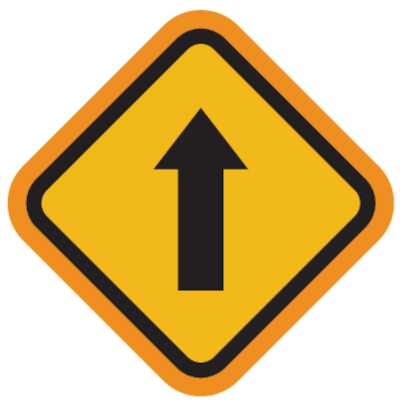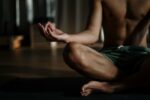Yoga is like that welcoming friend who greets you with open arms, no matter your age, fitness level, or flexibility. It’s not just about touching your toes or striking fancy poses; it’s a journey of self-discovery, wellness, and inner peace. If you’re a yoga newbie, don’t worry, we’ve got your back. In this Quick Start Guide, we’ll walk you through the essentials, from selecting the right yoga style to getting into your first yoga class with confidence. So, roll out your mat, take a deep breath, and let’s begin this transformative journey.
Selecting Your Yoga Style: Finding Your Flow
Yoga comes in various styles, each with its unique approach. Start by exploring the following options:
- Hatha Yoga: Perfect for beginners, Hatha focuses on basic postures and breathing techniques. It’s an excellent foundation for your yoga journey.
- Vinyasa Yoga: If you enjoy a dynamic, flowing practice that links breath to movement, Vinyasa might be your jam. It’s like a beautiful dance on your mat.
- Yin Yoga: For those seeking a slower, more meditative practice, Yin yoga involves holding poses for longer periods, enhancing flexibility and mindfulness.
- Bikram Yoga: If you like to sweat it out, Bikram yoga, performed in a heated room, can be a detoxifying and challenging experience.
Starting Your Practice: Yoga Essentials
- Find a Quiet Space: Create a serene space at home for your practice, free from distractions. A clear, clutter-free area is all you need.
- Get the Right Gear: Invest in a good yoga mat to prevent slipping and ensure comfort. Comfortable clothing that allows movement is essential.
- Breath is Key: Breath is the heart of yoga. Learn to breathe deeply and mindfully, syncing your breath with your movements.
- Start Slow and Gentle: As a beginner, it’s important to take it slow. Begin with basic poses and gradually progress to more advanced postures.
Joining Your First Yoga Class: Navigating with Confidence
- Research Local Studios: Find a yoga studio near you, read reviews, and inquire about beginner-friendly classes. Many studios offer special classes for newbies.
- Talk to the Instructor: Before your first class, have a chat with the instructor. Let them know you’re a beginner, and they’ll provide guidance and modifications as needed.
- Don’t Compare: In yoga, there’s no room for competition. Everyone’s journey is unique. Focus on your progress, not what others can do.
- Stay Consistent: Consistency is key in yoga. Even a short daily practice can yield significant benefits over time.
FAQ

Can I do yoga if I’m not flexible?
Absolutely! Yoga is about improving flexibility and overall wellness. You’ll become more flexible over time with consistent practice.
Do I need to be in shape to start yoga?
Not at all. Yoga is for people of all fitness levels. It’s a gentle way to start improving your physical and mental well-being.
How do I know if I’m doing the poses correctly?
Practice patience and mindfulness. It’s common to have imperfect form as a beginner. Over time, you’ll refine your poses with the help of instructors and self-awareness.
What if I can’t sit cross-legged on the floor?
That’s okay. You can sit on a cushion or chair. Yoga is adaptable to your needs and abilities.
Yoga and Stress Relief
Incorporating yoga into your routine isn’t just about physical fitness; it’s a powerful tool for managing stress. Through meditation and controlled breathing, yoga helps you navigate life’s challenges with a calmer mind. We’ll explore how yoga can be your sanctuary in a hectic world, offering insights into specific poses and practices to alleviate stress.
Yoga for Specific Goals
While yoga isn’t a high-intensity workout, it can be a game-changer for weight management and flexibility. We’ll delve into how a consistent yoga practice can help you shed unwanted pounds, build lean muscle, and increase your range of motion. Discover yoga’s surprising benefits for your body and overall health.
Yoga and Mental Health
Your journey into yoga goes beyond physical postures. Yoga can significantly impact your mental health, offering respite from anxiety, depression, and mood swings. Learn about the mind-body connection in yoga and how it contributes to emotional well-being. We’ll provide guidance on mindfulness techniques and meditation for a happier you.
Yoga at Home
Sometimes, busy schedules and commitments make attending a yoga class challenging. We’ll discuss the art of establishing a yoga sanctuary at home. Discover how to create a tranquil space, select online classes, and stay motivated in your home practice. Home yoga can be as effective and fulfilling as studio sessions.
Yoga Styles
The world of yoga boasts an array of styles beyond the basics. From Kundalini and Iyengar to Power and Ashtanga, each style offers a unique experience. We’ll take you on a tour of these yoga variations, helping you understand their principles and the benefits they bring. This exploration will enable you to choose the style that resonates most with your goals and personality.
Here’s a quick list of various yoga styles along with a brief description:
- Hatha is the foundational yoga style that focuses on physical postures (asanas) and breath control (pranayama). It’s ideal for beginners and emphasizes alignment and balance.
- Vinyasa, also known as flow yoga, synchronizes breath with movement. It’s a dynamic and fast-paced style that creates a seamless flow of postures.
- Iyengar is a precise and detail-oriented practice that uses props like belts and blocks to help students perfect their alignment in poses.
- Ashtanga is a rigorous and physically demanding style of yoga that follows a specific sequence of postures and is known for its intense vinyasa and strength-building postures.
- Bikram, or hot yoga, is practiced in a heated room with a set sequence of 26 poses. The heat is believed to increase flexibility and detoxification.
- Kundalini focuses on awakening the dormant energy within you through a combination of postures, breathing exercises, chanting, and meditation.
- Power yoga is a fitness-inspired style that incorporates strength and cardio elements. It’s fast-paced and challenging.
- Yin is a slow and meditative style that involves holding poses for extended periods (typically 3-5 minutes). It targets deep connective tissues and promotes relaxation.
- Restorative yoga is all about relaxation and rejuvenation. It uses props to support the body in gentle postures, aiding deep relaxation and stress relief.
- AcroYoga combines yoga, acrobatics, and Thai massage. It’s typically practiced with a partner and involves lifting and balancing each other.
- Jivamukti is a spiritually focused style that incorporates chanting, meditation, and philosophy. It’s a holistic approach to yoga.
- Anusara emphasizes the alignment of the body and heart. It’s a heart-centered practice that encourages self-acceptance and positivity.
- Sivananda is based on five principles: proper exercise, proper breathing, proper relaxation, proper diet, and positive thinking and meditation.
- Laughter yoga combines laughter exercises and yogic deep-breathing techniques. It’s a fun and therapeutic way to relieve stress and promote well-being.
- Chair yoga is designed for individuals with limited mobility. It involves modified poses that can be performed while sitting in a chair.
- Prenatal yoga is tailored for expectant mothers and focuses on gentle postures and breathing techniques to promote physical and mental well-being during pregnancy.
- Yoga Nidra, or yogic sleep, is a guided meditation and relaxation practice that promotes deep rest and stress reduction.
- Rocket yoga is a fast-paced, modern variation of Ashtanga. It incorporates various poses and allows for more freedom and creativity in sequencing.
- Viniyoga adapts yoga to the individual, emphasizing personalized practices to suit specific needs and abilities.
- Dharma yoga is a graceful and challenging style that blends elements of Hatha, Vinyasa, and Iyengar. It incorporates meditation and chanting.
- Aerial yoga involves performing traditional yoga poses while suspended from a silk hammock. It enhances flexibility and core strength.
- Somatic yoga focuses on releasing muscular tension and improving body awareness through slow, mindful movements and stretches.
- Shadow yoga incorporates dynamic, rhythmic movements, and practices to explore and unlock the hidden dimensions of the self.
- Dhyana yoga is the yoga of meditation. It emphasizes deep concentration and inner stillness to attain self-realization.
- Kriya yoga combines physical postures, breathing techniques, and meditation to promote spiritual growth and self-realization.
- Chakra yoga focuses on balancing the body’s energy centers (chakras) through specific poses and meditation.
- Cardio yoga blends yoga postures with cardio exercises to improve cardiovascular health and overall fitness.
Ganja Yoga:
- Ganja yoga combines yoga and cannabis to enhance relaxation and deepen the mind-body connection.
Beer Yoga: (Because Doug insisted)
- Beer yoga involves drinking beer while practicing yoga. It’s a fun and lighthearted way to enjoy yoga in a social setting.
- Partner yoga involves practicing yoga postures with a partner. It fosters trust, communication, and a sense of connection.
- Karma yoga focuses on selfless service and doing good deeds without attachment to the outcome. It’s a path to spiritual growth.
Naked Yoga: (Because Doug insisted)
- Naked yoga is practiced in the nude and emphasizes self-acceptance and body positivity.
- Mysore yoga is a traditional style of Ashtanga yoga where students practice at their own pace under the guidance of a teacher.
- Sup yoga combines yoga and stand-up paddleboarding on water, enhancing balance and core strength.
- Surfset yoga is practiced on a simulated surfboard, improving balance and agility.
- Vikasa yoga combines dynamic movements and meditation, emphasizing self-transformation.
- Water yoga is practiced in a pool, providing gentle support to increase flexibility and reduce joint strain.
- Jungle yoga takes place in natural settings, connecting practitioners with the healing energy of the wilderness.
- Forest yoga is another nature-inspired style that promotes harmony with the environment while practicing yoga.
- Hiking yoga combines yoga and hiking, allowing you to connect with nature and practice yoga in outdoor settings.
Embarking on a yoga journey is a beautiful step toward holistic well-being. As you begin your practice, remember that yoga is a personal voyage, and it’s okay to progress at your own pace. With each breath, each stretch, you’ll discover a more balanced, peaceful, and healthier you. Namaste.
- Ultimate Guide To Playing Online Casinos - May 27, 2024
- Addiction Recovery Books Worth Reading - January 24, 2024
- Homeschooling and Advocating for Child-Centric Reforms - November 18, 2023









